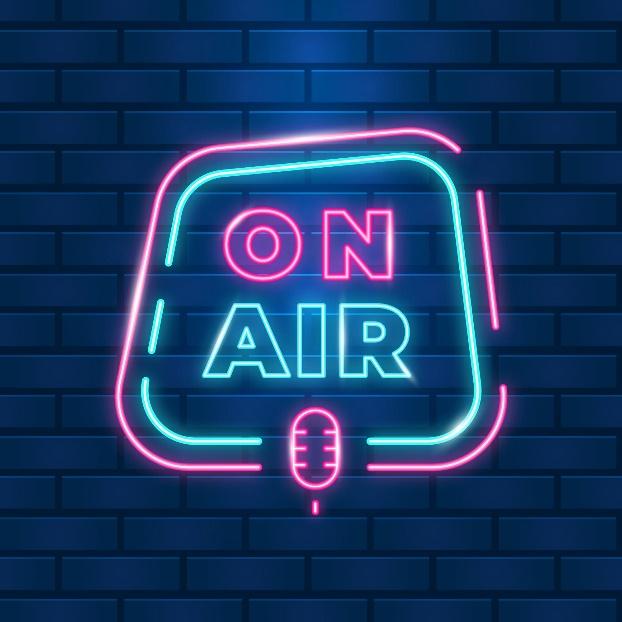
Are You Listening? This Is How Podcasts May Increase Sales and Revenue
Podcasting can be a powerful marketing tool for startups and large enterprises alike.
Some call it the radio of the digital era, given its ability to reach millions of listeners worldwide. Plus, it's cost-effective and can bring in extra revenue.
Starting a podcast is relatively easy, but you'll need to plan things out. First, think about what you want to talk about and make a list of topics that resonate with your target audience.
Next, use a company name generator to find the perfect podcast name. Avoid generic or trademarked names, offensive words, jargon, or misleading terms. A good example would be “My first 100k,” “The Side Hustlers,” “This Week in Business,” or something along those lines, depending on the topic of our podcast.
Apart from that, you need to map out your content strategy and draft a marketing plan. Don't forget about the technical side of things, which is just as important as the content itself.
Here's what you should know before getting started.
What Is a Podcast?
More than 80% of U.S. consumers listened to podcasts in 2021. That's quite impressive, considering that only 22% of Americans were aware of podcasting in 2006.
But what’s a podcast in the first place? At its core, it's a way to share content online. It consists of a series of audio episodes that revolve around specific themes, such as Hollywood life, parenting, business, or personal growth.
Podcasts can have one or more hosts and may vary in length, format, or style. For example, some podcasts feature video content or live streams, while others combine audio content and slide shows. 
Listeners can subscribe to a podcast and, sometimes, download it as an audio file to their devices. The content is usually available on the creator's website, third-party sites, or mobile apps like Spotify, Podcast Addict, CastBox, or Player FM.
Some examples of popular podcasts are "The Tim Ferris Show," "Startup Stories," "Dateline NBC," "SmartLess," and "Huberman Lab." Some have been running for over a decade and have millions of subscribers.
How Podcasting Can Benefit Your Business?
Podcasting is a cost-effective way to build trust with potential customers and grow your reach. Over time, it can drive brand awareness and help establish your expertise.
In one survey, 72% of business leaders with 100 to 500 employees and 68% of those with over $5 million in revenue said they listen to podcasts. The study also found that more than half of millennials have this habit.
Any of these people could be a potential customer, depending on what you sell. By starting a podcast, you can get their attention and lay the foundation of a strong relationship.
Podcasting can also help you reach a wider audience compared to other types of content. For example, some customers may not have the time to read your blog posts or eBooks, but they'll listen to your podcast while driving or doing chores.
Plus, audio content is often more engaging and easier to digest than text and less distracting than videos. Therefore, it can help you get your point across more effectively.
Need one more reason to start a podcast? With this approach, you can collect customer data and build a dedicated audience. Let's say you sell gym equipment. You could start a fitness podcast and upload it to your website or on third-party subscription platforms like Supercast, Glow, or Captivate.
With either option, you can collect email addresses and other information from your audience. Use this data to better target your marketing efforts and create personalized experiences.
But that's not all. You can also sell monthly or annual subscriptions to your podcast or monetize the content through advertising, sponsored reviews, donations, affiliate marketing, and other means.
How to Get Started with Podcasting?
Before getting started, decide whether you'll rent a podcast studio or take the DIY route.
The second option requires higher initial costs but can save you thousands of dollars in the long run. At the very least, you'll need the following:
-
A computer, smartphone, or tablet
-
A decent camera (if you plan to record a video podcast)
-
A high-quality microphone
-
Headphones
-
Podcasting software
For most types of podcasts, you'll only need one or two software programs, which can be free or paid. Ideally, choose one that allows you to record and edit audio content, such as iMovie or Anchor.
Apart from that, pick a hosting platform like Vimeo, YouTube, Podbean, or SoundCloud.
If you decide to rent a podcast studio, expect to pay anywhere between $20 and $250 per hour, depending on its location and equipment. Some studios also include podcast recording and editing tools.
When you’re a small business, it’s perfectly fine to start with the DIY approach and see how it goes. This would allow you to learn the ropes and experiment with different content formats on the cheap. Later, you can either invest in professional equipment or rent a studio.
Podcast Tips for Creating Engaging Content
The average length of a podcast is around 40 minutes, but you can talk as little or as much as you want. However, it doesn't make sense to drag things out for an hour or longer if you can get your point across in 15 minutes.
That said, here are some tips for recording a podcast to grow your business:
- Set a clear goal for your podcast, whether it's educating, entertaining, or informing the audience.
- Study other podcasts in your niche, and then try to come up with a different approach. For example, you could share new insights or address the topic from a unique angle.
- Research your target audience so you can adapt your message to their needs and preferences.
- Release episodes regularly, whether it's once a week or once a month. Create a schedule and stick to it.
- Cover topics you're knowledgeable about. This way, you'll find it easier to carry out the show and address the comments made by your guests.
- Add voice-overs, sound effects, and video content to drive engagement. Use Canva or similar tools to create an eye-catching podcast cover.
Think of your podcast as a short movie. Introduce yourself and your guests in the intro, and discuss the topic in the main body of your show.
End with a strong conclusion that reinforces your key points and encourages listeners to take action. For example, you can ask them to download an eBook or join your email list for further insights.
Lastly, promote the podcast on your website and social media channels and link to it in your newsletters. Go one step further and upload it to iTunes, Stitcher, Downcast, Podcast Addict, and other platforms to gain exposure.
Trending
-
1 SEO Mistakes That Could Be Costing Your Shopify Store Sales
Daniel Hall -
2 Strategies for Safeguarding Assets and Investments
Daniel Hall -
3 The Role of PR Firms in Crisis Management and Damage Control
Nitish Mathur -
4 How to Make Appealing Visuals for Your E-commerce Store
Daniel Hall -
5 The Competitive Landscape of Low-Cost Carriers in Belgium: TUI Fly Belgium’s Position
Daniel Hall





Comments